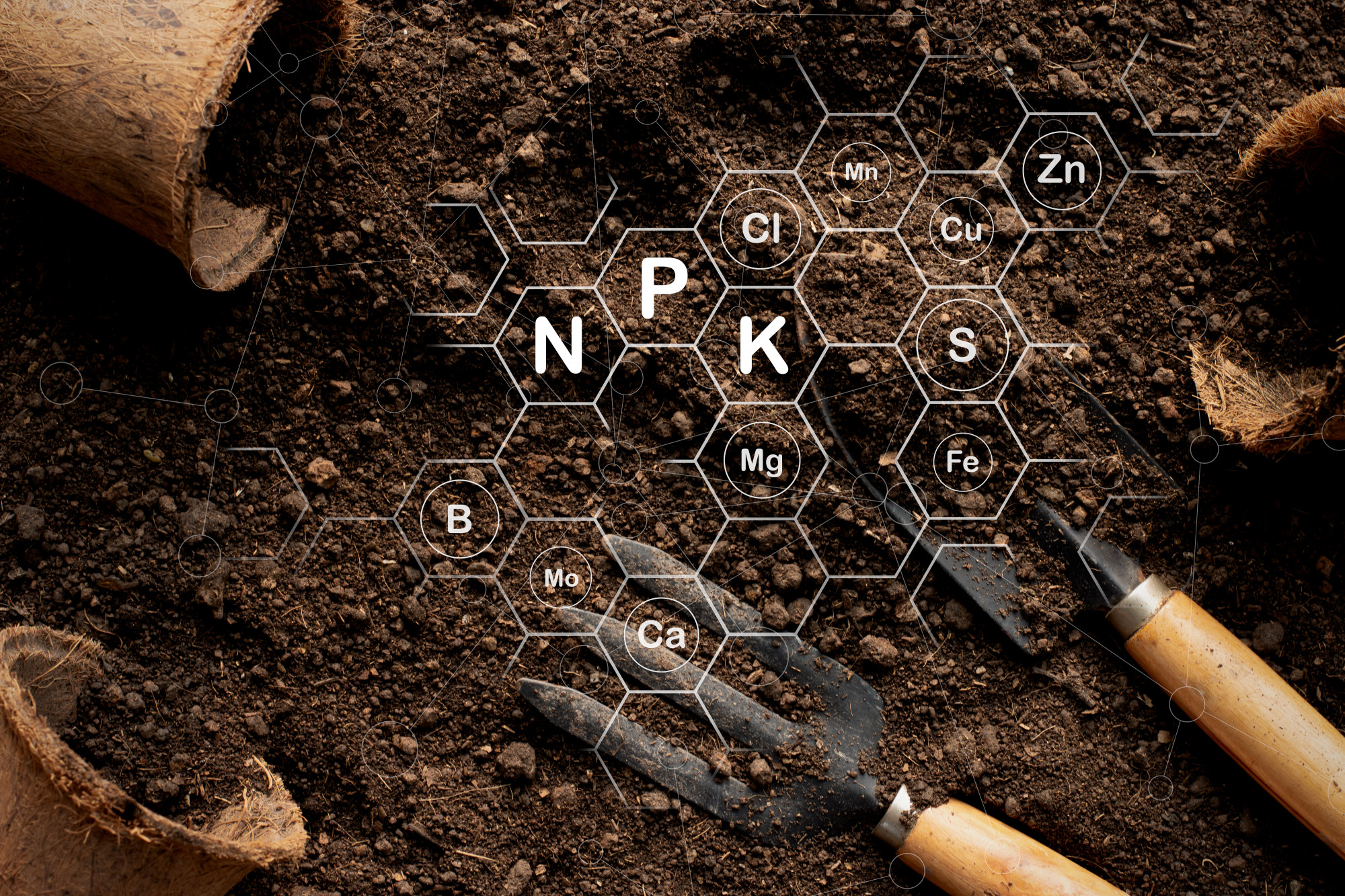The type of fertilization and the correct strategy for a crop needs to consider the specific demand of each species, the soil fertility in the area and the nutrient requirement of the plant in each growth stage and during the whole cycle. This information will imply if the fertilizer application should occur before or after sowing and if the goal is to maintain or to improve the content of nutrients in the soil.
Once the farm’s needs are understood, it is recommended to pick the ideal type of fertilization, keeping in mind that more than one type can be chosen during the crops’ cycle.
Preventive Fertilization If there isn’t access to soil analysis, or the content of some of the nutrients in the soil is unknown, picking this type of fertilization might be a good course of action. It is based on deficiency observations in a determined area aiming to address nutrient deficiencies without precisely knowing the plants’ needs, by applying fixed doses of fertilizers.
There are some cases in which preventive fertilization is almost a “must do”. Legumes for example, frequently have molybdenum and cobalt applied to their seeds to improve nitrogen’s biological fixation, and Mo is a nutrient that is hardly present on soil analysis, so the fertilization is usually preventive. Broccoli, being a crop with a high boron demand, and boron being a nutrient that can be easily leached requires preventive fertilization, which can remarkably decrease production losses. Prescription Fertilization This is the complete opposite of preventive fertilization. In this case, the farmer has all the data necessary to define a fertilizer dosage that will provide the highest financial return. Soil, tissue and water analysis information are considered, resulting in the exact application of nutrients required by the plants, which leads to the best economical choice, the more accurate one, and also the best way to use natural resources rationally.
 Formation Fertilization
Low doses of fertilizers are applied in the sowing period aiming to supply the plants needs for growth
and development before they start producing.
Corrective Fertilization
Here the main idea is to improve the content of a nutrient that is already present in the soil, changing
its content status from low or very low to high. This is done by applying a very high dose of nutrients
that have a significant residual effect, such as phosphorous, zinc, copper and molybdenum. These
nutrients are incorporated in the arable layer of the soil and are extremely adsorbed by the soil
particles, and since the dose applied is way higher than the dose required by the plant, the residual
effect ends up being responsible for increasing the content of that nutrient in the soil over time.
Meintenance Fertilization
This last type of fertilization is used to maintain the nutrient content in the soil, once it has
reached the desired level.
Formation Fertilization
Low doses of fertilizers are applied in the sowing period aiming to supply the plants needs for growth
and development before they start producing.
Corrective Fertilization
Here the main idea is to improve the content of a nutrient that is already present in the soil, changing
its content status from low or very low to high. This is done by applying a very high dose of nutrients
that have a significant residual effect, such as phosphorous, zinc, copper and molybdenum. These
nutrients are incorporated in the arable layer of the soil and are extremely adsorbed by the soil
particles, and since the dose applied is way higher than the dose required by the plant, the residual
effect ends up being responsible for increasing the content of that nutrient in the soil over time.
Meintenance Fertilization
This last type of fertilization is used to maintain the nutrient content in the soil, once it has
reached the desired level.
With time, some nutrients are lost by erosion, leaching, fixation, or are exported by grains and fruits. To balance these losses, it’s important to consider the yield goal and the total loss, applying a dose that will give back to the soil and the plant whatever was lost and keep the nutrient content as high as it needs to be to ensure the yield expected by the farmer is reached.
For perennial crops, the maintenance fertilization is done by split applications, allowing the correct supply of the nutrient during each growth stage, and also decreasing potential losses. For annual crops, the whole system has to be considered, given that the previous crop can have an impact on the nutrient availability in the soil.
In order to get a more precise dosage recommendation, the ideal combination would be the integration between prescription and maintenance fertilization. On account of using soil, tissue and water analysis data combined with the nutrient exportation, dose variety and yield goal for a crop, the result of the fertilization plan is as accurate as it gets. The i-Plant Nutrition software uses this combination to help create the perfect fertilization program for your crop! Check out our software here! (Link to software tour).
 Fertilization Stages
Once the type of fertilization has been chosen, it’s time to think about the fertilization strategy. For
that, is important to mind the crop, soil type and ph, and nutrients’ characteristics, such as its
source, solubility, residual effect and mobility in the soil and the plant.
Fertilization Stages
Once the type of fertilization has been chosen, it’s time to think about the fertilization strategy. For
that, is important to mind the crop, soil type and ph, and nutrients’ characteristics, such as its
source, solubility, residual effect and mobility in the soil and the plant.
There are 4 different strategies for fertilization: Soil Fertilization A nutrient is applied to the soil aiming to increase its amount in the soil solution, where it can be absorbed by the roots. For it to be efficiently used by the plants, the nutrient sources need to be solubilized in the soil at the same speed as they are absorbed, and applied in a way they can be reached by the roots or at least have contact with it through mass flow. The biggest struggle for this application is to get good distribution and uniformity because wind, topography and machinery setting can have a big influence on how much fertilizer is actually applied to the soil.
 Foliar Fertilization
Nutrient solutions are applied directly to the leaves, avoiding chemical reactions with soil components.
This strategy is the fastest way to correct nutrient deficiencies and is usually used for
micronutrients, seeing they are required in smaller quantities, allowing at times, full supply of the
amount of nutrient needed by the plant.
Seed Fertilization
In this case, the nutrients are supplied to the seeds. It can be a way to provide nutrients required in
small amounts or nutrients needed in the early development stages. It is also a good strategy to apply
nutrients with a homogenous distribution.
Fertigation
Minerals in their hydrosoluble form are provided to the plants by irrigation water. It has the benefit
of splitting the nutrient doses throughout the whole cycle, and it’s usually employed for high-value
crops.
Foliar Fertilization
Nutrient solutions are applied directly to the leaves, avoiding chemical reactions with soil components.
This strategy is the fastest way to correct nutrient deficiencies and is usually used for
micronutrients, seeing they are required in smaller quantities, allowing at times, full supply of the
amount of nutrient needed by the plant.
Seed Fertilization
In this case, the nutrients are supplied to the seeds. It can be a way to provide nutrients required in
small amounts or nutrients needed in the early development stages. It is also a good strategy to apply
nutrients with a homogenous distribution.
Fertigation
Minerals in their hydrosoluble form are provided to the plants by irrigation water. It has the benefit
of splitting the nutrient doses throughout the whole cycle, and it’s usually employed for high-value
crops.
No matter the strategy you choose, the i-Plant Nutrition can help you make the most of it!





